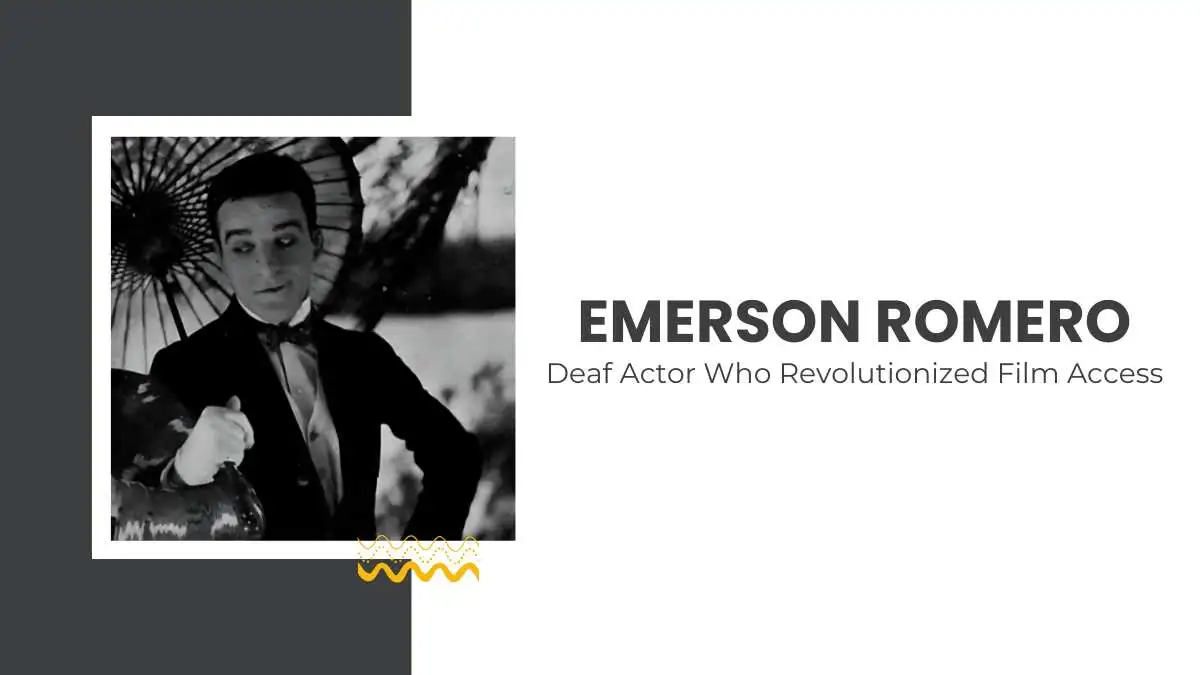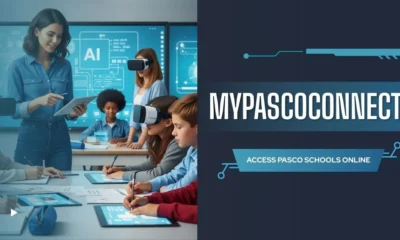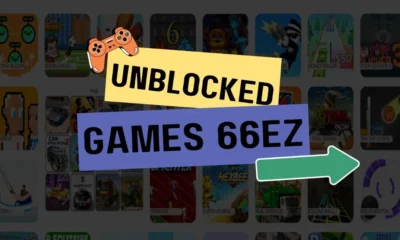BIOGRAPHY
Emerson Romero: Deaf Actor Who Revolutionized Film Access

Emerson Romero (1900–1972) was far more than a Cuban American silent film actor. He was a visionary who bridged the gap between entertainment and accessibility, ensuring that deaf audiences could enjoy cinema at a time when “talkies” threatened to exclude them entirely. Known for his comedic charm, fearless stunt work, and creative ingenuity, Romero’s career journey reflects both the golden age of silent cinema and the early fight for equal access in media.
Early Life and Deafness
Born in Havana, Cuba, in 1900, Emerson Romero’s life changed dramatically at the age of six when he contracted whooping cough, resulting in complete deafness. This sudden loss of hearing profoundly shaped his future but did not limit his ambitions. His family later moved to New York, where Romero attended schools for the deaf, gaining not only an education but also an appreciation for performance, visual storytelling, and physical expression skills that would later define his career.
Rise to Stardom in Silent Films
During the 1920s, Hollywood was booming, and silent cinema provided a level playing field for actors regardless of hearing ability. Romero entered the industry under the stage name Tommy Albert, quickly making a name for himself in the comedy genre. His performances stood out for their energy, humor, and authenticity. He often performed his stunts, choreographed physical comedy sequences, and even applied his makeup, hallmarks of dedication and creativity.
Over his career in silent films, Romero appeared in more than two dozen comedies, winning audiences with his expressive gestures and sharp comedic timing. In an era dominated by slapstick humor, his style aligned with legendary contemporaries like Buster Keaton and Harold Lloyd, yet he brought a distinct charm rooted in his life experience as a deaf performer.
The Shift to Talkies and Industry Exclusion
The late 1920s saw the advent of synchronized sound films, or “talkies.” While revolutionary for hearing audiences, the new technology marked a turning point for many silent film actors, especially those in the deaf community. Suddenly, studios prioritized dialogue-heavy performances, sidelining visual comedy in favor of verbal wit.
For Emerson Romero, this transition meant a rapid decline in acting opportunities. Without the accessibility tools that exist today, such as closed captions or sign language interpretation, deaf actors found themselves shut out of an industry they had helped build. Yet Romero’s story did not end there.
Life Beyond the Silver Screen
Outside of his contributions to film and accessibility, Romero remained active in the deaf community. He participated in events, advocated for inclusion, and inspired younger generations of deaf performers and innovators. His resilience, transforming professional obstacles into opportunities, became a model for overcoming systemic barriers.
Romero passed away in 1972, leaving behind a legacy that transcends his time in Hollywood. His life story continues to inspire advocates for disability rights and those fighting for greater representation in entertainment.
Why Emerson Romero’s Legacy Matters Today
In the 21st century, discussions about diversity, equity, and inclusion in media are more prominent than ever. Emerson Romero’s story is a reminder that representation is not just about who appears on screen; it is also about who can access and enjoy the content.
For deaf and hard-of-hearing audiences, accessibility is not a convenience; it is a right. Romero’s pioneering spirit shows that innovation can emerge from necessity, and that one individual’s efforts can shift an entire industry’s perspective.
Lessons from Emerson Romero’s Life
Emerson Romero’s journey offers several key takeaways:
- Adaptability Is Key: When faced with career-ending industry changes, Romero pivoted toward innovation instead of giving up.
- Accessibility Benefits Everyone: While his work was aimed at deaf audiences, captioning ultimately became a tool appreciated by multilingual viewers, language learners, and those watching in noisy environments.
- Representation Shapes Opportunity: Romero’s early success in silent films demonstrated that talent transcends disability, but his exclusion during the talkies era shows the importance of inclusive practices in all media formats.
Continuing the Fight for Accessible Media
Despite the progress made since Romero’s time, accessibility in entertainment is still evolving. Streaming services and broadcasters are now legally required in many countries to provide captions, yet issues like accuracy, availability, and cultural sensitivity remain challenges.
Organizations such as the National Association of the Deaf (NAD) and the World Federation of the Deaf (WFD) continue to push for full accessibility across all forms of media. In this ongoing journey, Emerson Romero’s legacy serves as a touchstone, a historical reminder that change often begins with a single determined voice, even if it’s expressed through silent films and written words.
FAQ
Q1: What was Emerson Romero’s biggest contribution to film?
He invented an early method of film captioning in the 1940s, making movies more accessible to deaf audiences.
Q2: Why did Romero leave acting?
The transition from silent films to “talkies” reduced opportunities for deaf performers, prompting him to focus on accessibility innovations.
Q3: How is Romero’s work relevant today?
His pioneering approach to captions laid the foundation for modern closed captioning, now a standard feature in streaming platforms and broadcast media.
Conclusion
Emerson Romero’s life was a testament to creativity, resilience, and advocacy. From his beginnings in Havana to his rise as a silent film star in Hollywood, and ultimately to his role as a pioneer in film captioning, Romero’s contributions helped pave the way for generations of deaf audiences to enjoy and engage with cinema.
In celebrating his work, we honor not only a talented performer but also a visionary who saw beyond the barriers of his time. Emerson Romero’s story underscores a universal truth: when art is made accessible, it becomes more powerful, more inclusive, and more enduring.
References & Further Reading
- National Association of the Deaf (NAD) – History of Captioning
- World Federation of the Deaf (WFD) – Advocacy for Media Accessibility
- Silent Era Film Database – Profiles of Deaf Silent Film Actors
-

 BIOGRAPHY6 months ago
BIOGRAPHY6 months agoBehind the Scenes with Sandra Orlow: An Exclusive Interview
-

 HOME1 year ago
HOME1 year agoDiscovering Insights: A Deep Dive into the //vital-mag.net blog
-

 HOME1 year ago
HOME1 year agoSifangds in Action: Real-Life Applications and Success Stories
-

 BIOGRAPHY1 year ago
BIOGRAPHY1 year agoThe Woman Behind the Comedian: Meet Andrew Santino Wife




























